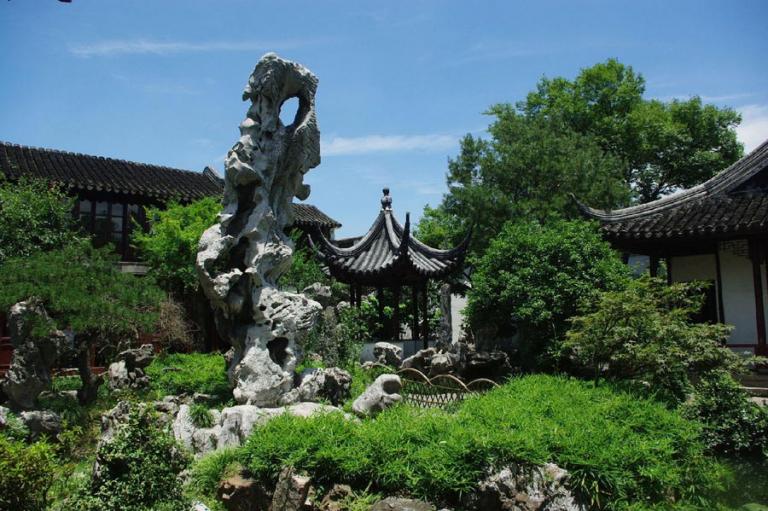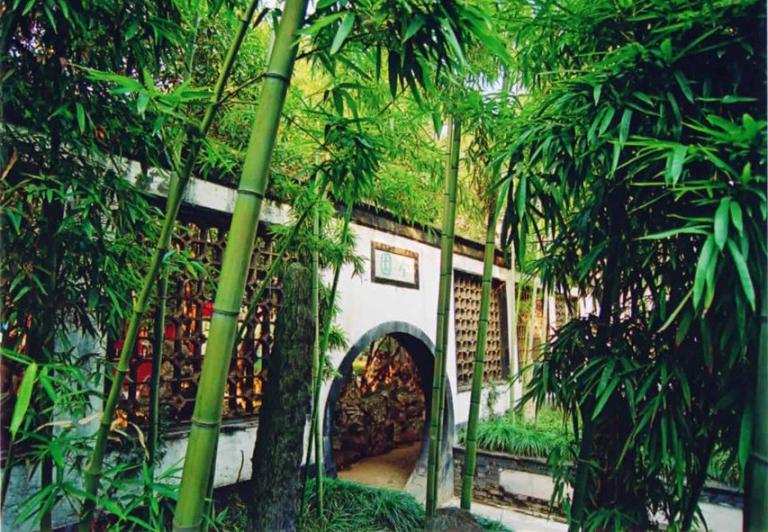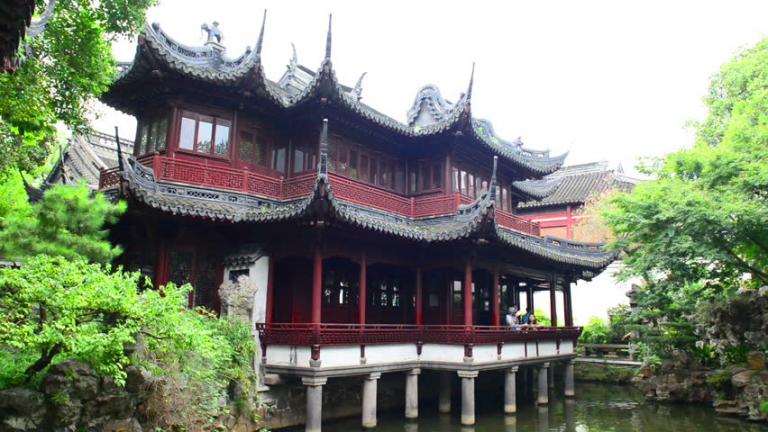Ancient Chinese Garden and Its Culture
7 min readAncient Chinese gardens were created in the same way as a combination of landscape and paintings together with poems-this was the so-called “poetic garden”. The design of Chinese gardens was to provide a spiritual utopia for one to connect with nature, to come back to one’s inner heart, to come back to ancient idealism. Chinese gardens are a spiritual shelter for men,a place they could be far away from their real social lives, and close to the ancient way of life, their true selves, and nature. This was an escape from the frustration and disappointment of the political problems in China. They used plants as symbols. Bamboo was used in every traditional Chinese garden. This is because bamboo represents a strong but resilient character. Often pine is used to represent longevity, persistence, tenacity and dignity.
The lotus is used to symbolize purity. The flowering plum is one of the most important aspectsof a Chinese garden, as it represents renewal and strength of will. Flowering peaches are grown for spring color. The chrysanthemum is use to symbolize splendor, luster and “the courage to make sacrifices for a natural life”. Peonies symbolize wealth and banana trees are used simply for the sound they make in the breeze.

Private Garden in China
In old days private gardens in China were owned by bureaucrats, landlords, rich merchants, and the scholar-gentry. During the Ming and Qing dynasties private gardens were found all over China. In the north most of them were built in Beijing. In the lower Yangtze River Valley the majority of them were found in Suzhou and Hangzhou. In the south private gardens were mostly in the Lingnan region. But among all the private gardens, those in the lower Yangtze River Valley were the most typical of Chinese garden culture-the nation’s four best known gardens are all situated in this region: Anlanyuan Garden of Haining, ZhanyuanGarden of Nanjing, Lion Grove of Suzhou, and Qinyuan(Jichangyuan) Garden of Wuxi. Most private gardens are in cities. As extensions of dwellings, they are generally small in size, but look elegant and tasteful, and they perform multiple functions such as lodging, get-together study, theatrical performance, and sightseeing. With the limited space of a garden, nature is imitated in a fastidious way. The beauty of natural landscape is condensed and reproduced in the form of artificial mountains and tree groves in a garden that could be visited and watched, and in which harmony is achieved between man and nature. In the meantime, no effortis spared to achieve a poetic grace and satisfy the fancy for a lofty and elegant lifestyle.
The Yuyuan Garden in Shanghai:a typical example of the south garden The Yuyuan Garden is found in the southeast part of the old city of Shanghai. Pan Yunduan, who was Sichuan Provincial Administrative Commissioner of the Ming Dynasty, built this private garden for his parents in 15 59. It remains as the only ancient garden in urban Shanghai, and for this reason it is protected as a national cultural legacy. The Yuyuan Garden has had its fill of ups and downs. It has changed hands repeatedly, and undergone major expansions on several occasions. The garden was also associated with many major historical events in Shanghai, but in terms of landscaping culture, it can well be regarded as a crystallization of the Chinese garden culture after the mid-Ming Dynasty. The Yuyuan Garden today is a veritable jungle of architectural structures, where the forms of artificially hills are reflected quiveringly in the ponds, and the entire place is hidden in the rich verdure of trees and plants. No wonder ancients praised it as the “best garden in the southeast”.
The Yuyuan Garden abounds in exotic scenes and sights.A total of 48 scenic views-chambers, halls, pavilions, kiosks, corridors, walls, trees, rocks and ponds-are picturesquely laid out in this garden’s 20,000-square-metre space. The artificial hills look real, and so do the caves. Five dragon-shaped walls divide the garden into six scenic zones with distinct features.
Of all the beauty spots in the Yuyuan Garden, the Giant Artificial Hill is definitely the best. In fact, it is the largest artificial hill built of yellow stone since the Ming Dynasty. Several thousand tons of stones were consumed in constructing this hill, whose main peak stands12 metres tall. All the stones were quarried from Wukang County in Zhejiang Province. Both the textures of rocks and their shapes were taken into full account when this hill was being piled up to evoke memory of the real thing. The presence of a footpath, cliffs, ravines, and streams has contributed to the realness the builders purported to achieve.A kiosk stands atop the hill to commander the vista beyond the walls of the Yuyuan Garden.

Imperial Garden in China
The term “imperial garden”generally refers to those in which emperors lived and entertained themselves. Apart from the general features of classical Chinese gardens, imperial gardens are also marked by the following five salient features.
The guideline for the design of an imperial garden gives expression to feudal autocracy and reflects the idea that the Son of Heaven is the richest man under heaven.
There is a liberal choice of locations, and the construction of an imperial garden is backedup by abundant resources, so that not only mountains and lakes in their original forms could be incorporated, but lakes dug, and mountains constructed, as well, in imitation of natural scenes. All sorts of buildings could be constructed, too.
The general layout of an imperial garden was magnificent, the buildings are beautiful or imposing and perform diverse functions, so that living in his imperial garden the emperor could administer state affairs, take up his lodging, receive tributes, feast his guests, watch theatrical performances, singing and dancing, Wushu contests, pay homage to the Buddha, collect books and treasures, observe crops, and go fishing and hunting.
Materials for the construction of gardens were wide ranging, and vast numbers of artisans could be conscripted for this purpose, so that collective wisdom was pooled and the gardens were richly varied in form.
Most imperial gardens are situated in the north, and thus susceptive to the northern climatic in so far as architectural tradition, coloration and the planting of vegetation are concerned. Despite keen efforts made to imitate famous gardens in the lower Yangtze Valley these gardens still retain a style unique to the north.
Beijing’s imperial gardens are outstanding examples of classical Chinese garden culture; they are also part of the precious world cultural heritage. Among these gardens, the Beihai Park, the Jingshan Park, the Summer Palace, Yuanmingyuan and Xiangshan Park are the most famous ones. The Mountain Summer Resort of Chengde,250 kilometers northeast of Beijing, is generally regarded as an extension of Beijing’s imperial gardens.
The Summer Palace in Beijing:a typical imperial garden Situated in the western outskirts of Haidian District, the Summer Palace is 15 kilometers(9.3 miles) from central Beijing. Having the largest royal park and being well preserved, it was designated, in 1960 by the State Council, as a Key Cultural Relics Protection Site of China.
Containing examples of the ancient arts, it also has graceful landscapes and magnificent constructions. The Summer Palace is the archetypal Chinese garden, and is ranked amongst the most noted and classical gardens of the world. In 1998, it was listed as one of the World
Constructed in the Jin Dynasty, during the succeeding reign of feudal emperors; it was extended continuously. By the time of the Qing Dynasty, it had become a luxurious royal garden providing royal families with rest and entertainment. Originally called Qingyi Garden(Garden of Clear Ripples), it was know as one of the famous “three hills and five gardens”(Longevity Hill, Jade Spring Mountain, and Fragrant Hill; Garden of Clear Ripples, Garden of Everlasting Spring, Garden of Perfection and Brightness, Garden of Tranquility and Brightness, and Garden of Tranquility and Pleasure). Like most of the gardens of Beijing, it could not elude the rampages of the Anglo-French Allied Force and was destroyed by fire. In 1886, Empress Dowager Cixiembezzled navy funds to reconstruct it for her own benefit, changing its name to Summer Palace(Yiheyuan). She spent most of her later years there, dealing with state affairs and entertaining. In 1900, it suffered again, being ransacked by the Eight-Power Allied Force.
Composed mainly of Longevity Hill and Kunming Lake, the Summer Palace occupies an area of 294 hectares(726.5 acres), three quarters of which is water. Guided by nature, artists designed the gardens exquisitely so that visitors would see marvelous views and be amazed by perfect examples of refined craftwork using the finest materials.
Centered on the Tower of Buddhist Incense(Foxiangge) the Summer Palace consists of over 3,000 structures including pavilions, towers, bridges, and corridors. The Summer Palace can be divided into four parts: the court area, front-hill area, front-lake area, and rear-hill and back-lake area.
Front-Hill Area: this area is the most magnificent area in the Summer Palace with the most constructions. Its layout is quite distinctive because of the central axis from the yard of Kunming Lake to the hilltop, on which important buildings are positioned including Gate of Dispelling Clouds, Hall of Dispelling Clouds, Hall of Moral Glory, Tower of Buddhist Incense, the Hall of the Sea of Wisdom, etc.
Rear-Hill and Back-Lake Area: although the constructions are fewer here, it has a unique landscape, with dense green trees, and winding paths. Visitors can feel a rare tranquility, and elegance. This area includes scenic spots such as Garden of Harmonious Interest and Suzhou Market Street.
Court Area: this is where Empress Dowager Cixi and Emperor Guangxu met officials, conducted state affairs and rested. Entering the East Palace Gate, visitors may see the main palace buildings: the Hall of Benevolence and Longevity served as the office of the Emperor, theHall of Jade Ripples where Guangxulived, the Hall of Joyful Longevity, Cixi’s residence, the Hall of Virtue and Harmony where Cixi was entertained.
Front Lake Area: covering a larger part of the Summer Palace, opens up the vista of the lake.
A breeze fluttering, waves gleam and willows kiss the ripples of the vast water. In this comfortable area there are the Eastern and Western Banks, the Seventeen-Arch Bridge, Nanhu Island, and so on. On the western bank float six distinct bridges amongst which the Jade-Belt Bridge is the most beautiful.









